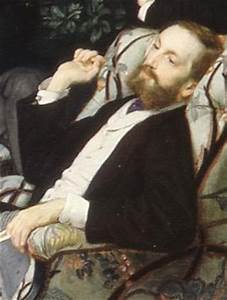PRINCE EDMOND DE POLIGNAC, French composer, born (d: 1901); A descendant of one of the more illustrious families of France. His father Auguste Jules Armand Marie, Prince de Polignac (1780-1847) was the Minister of State in the Restoration government of King Charles X, and was the author of the Thirty Ordinances in 1830, which revoked the Constitution, suspended freedom of the press, and gave the king extraordinary powers, including absolute power in the name of “insuring the safety of the state”.
In 1875 a new friend entered de Polignac’s life, Comte Robert de Montesquiou, a beautiful and intelligent man, twenty-one years his junior. They shared many interests, and began an intimate relationship at that time. In his later years, Montesquiou used his wit to shield himself from sincere emotional interaction. He is remembered as a model for Des Esseintes in Huysman’s A Rebours, and the Baron de Charlus in Proust’s A la recherche du temps perdu.
Through Montesquiou’s circle, Polignac made the acquaintance of the Elisabeth, comtesse Greffuhle and of Gabriel Fauré, and became a member of the Société Nationale de Musique, where his compositions were performed alongside those of Chausson, Debussy and Faure.
By 1892, Polignac, inept with money and impoverished through investments in a series of get-rich-quick schemes, was destitute; his nephews helped him with loans, but noted that desperate action was needed. The solution they suggested was marriage to a woman of appropriate means. Polignac discussed the matter with Montesquiou, and Montesquiou with his cousin Élisabeth Greffulhe, and out of these conversations the name of Winnaretta Eugene Singer, Lesbian daughter of Isaac Singer, the sewing machine magnate, with her marriage to Prince Louis de Scey-Montbéliard lately annulled, arose.
Singer’s social status could be improved by marrying a prince, even a poor one. And the arrangement would have other benefits: Winnaretta was not sexually interested in men at all. She was intimately interested in music, however, something the two did have in common. Polignac asked the Comtesse Greffulhe to sound out Madame Singer on the subject of a mariage blanc (unconsummated marriage), in which each partner would have their own bed but would share artistic interests. Montesquiou, who collaborated with Winnaretta on some artistic projects, asked her to speak with Madame Greffulhe, and there the arguments were reviewed; her social position, compromised by divorce, would be improved by an alliance with one of the oldest and most distinguished aristocratic families in France; with the thirty-one year age difference, and the predilections of the bride and groom, Winnaretta would be free to lead her personal life as she wished, with no sexual demands from Edmond. You got that?
The advantages clear, a friendship and affection grew. In November 1893, Edmond proposed marriage to Winnaretta, and she accepted, a year after the idea had first been broached. On December 16, 1893 the couple was married by the Abbé de Broglie in the Chapelle des Carmes. The union received the blessings of Pope Leo XIII. Montesquiou, who felt Edmond owed him a debt of gratitude for effecting this marriage of convenience, felt slighted when Edmond was not sufficiently effulgent, and the friendship was irrevocably broken.
